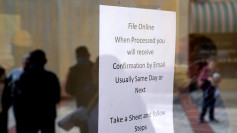U.S. homeowners are taking advantage of low interest rates and buyers want more, according to a top executive and the Mortgage Bankers Association on Wednesday.
"The dynamic is like something I've never seen before," Finance of America Companies chief executive officer Patti Cook told Yahoo!Finance Wednesday. "You've got the combination of incredibly low rates, you've got a very supportive Fed, they're buying mortgages, and this has led to a tremendous supply of refinancings."
The volume of new mortgages this year is set to exceed last year's total by 37%, the Mortgage Bankers Association said separately.
The U.S. Federal Reserve Bank reported Tuesday that the country's mortgage debt has now reached a high of close to $10 trillion.
The central bank said that record-low interest rates in recent months had helped fuel the recent boom in the nation's housing market.
Earlier in the month, mortgage rates fell to a new low, the 12th new low recorded since the start of the year. Homebuyers across the nation have taken advantage of the new-constant low rates, increasing the country's mortgage debt.
Between July and September, the nation's mortgage debt surged by about $85 billion to $9.86 trillion. Home mortgages account for a major percentage of the country's total household debt.
According to the central bank's report, this year's new home loans, including refinancing, is the second-highest ever recorded since the refinancing boom of 2003.
The central bank said that compared to the housing boom before the 2008 financial crisis, the number of borrowers with credit scores above 760 points is much higher. This indicates a more positive outlook for lenders as the chances of loan defaults could be much lower.
Apart from housing loans, the Federal Reserve said that it had also recorded a dramatic increase in auto and student loans. Despite the effects of the pandemic on household incomes and employment, consumers have increased their acquisition of new vehicles.
The move by automakers to rollout additional easy-ownership schemes and other promotions has prompted buyers to take on more loans. Car loans in the U.S. surged to the highest level on record at $1.36 trillion, the report said.
While loan volumes had increased, loan delinquency rates had dropped during the third quarter, the report indicated. The release of stimulus measures and the implementation of supporting legislation such as the Cares Act has helped in reducing defaults throughout the crisis. Under the legislation, lenders were able more easily offer deferral programs.
During the third quarter, student loan delinquencies dropped by 4.4% when compared to the same period last year. Economists have warned that the forbearance programs are only a short-term solution and delinquencies could increase once those programs end.






